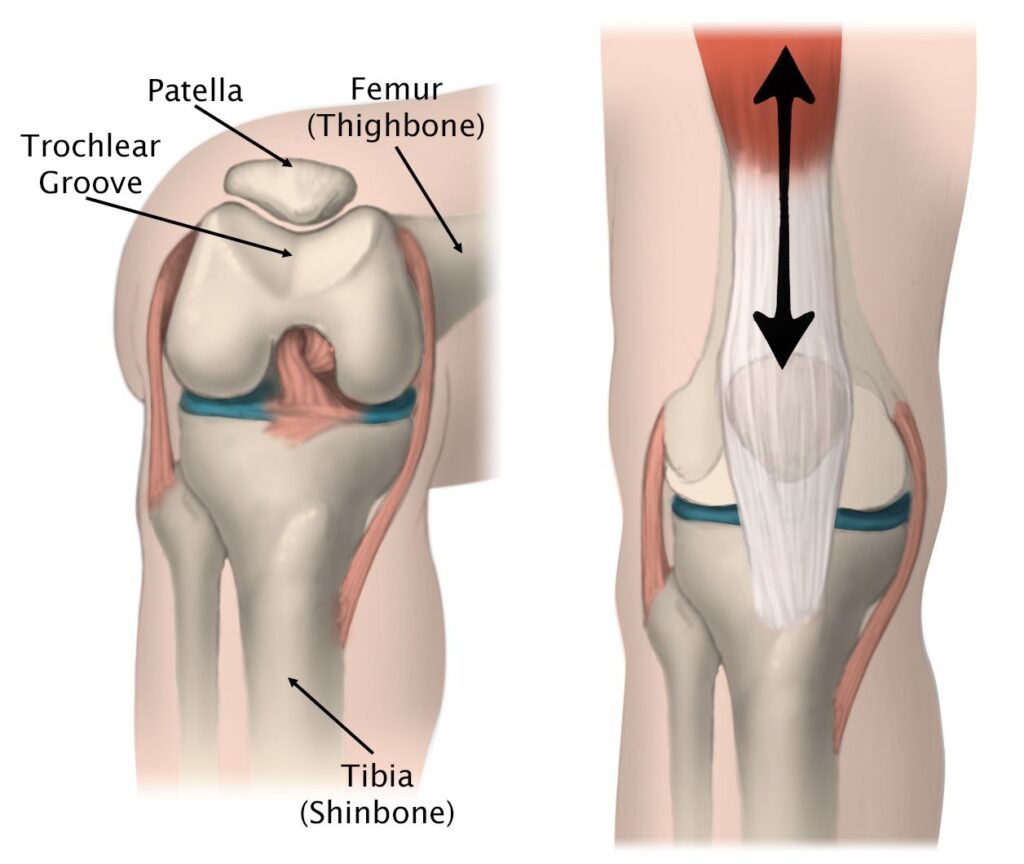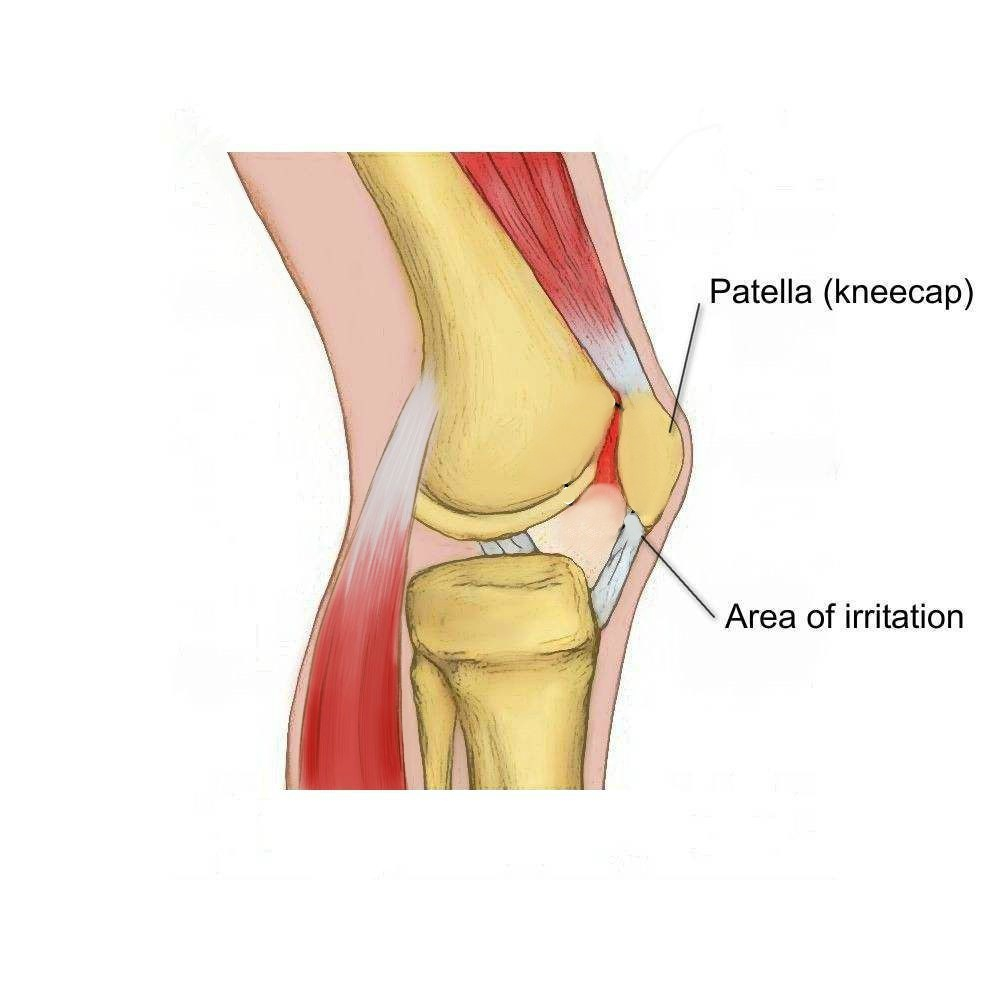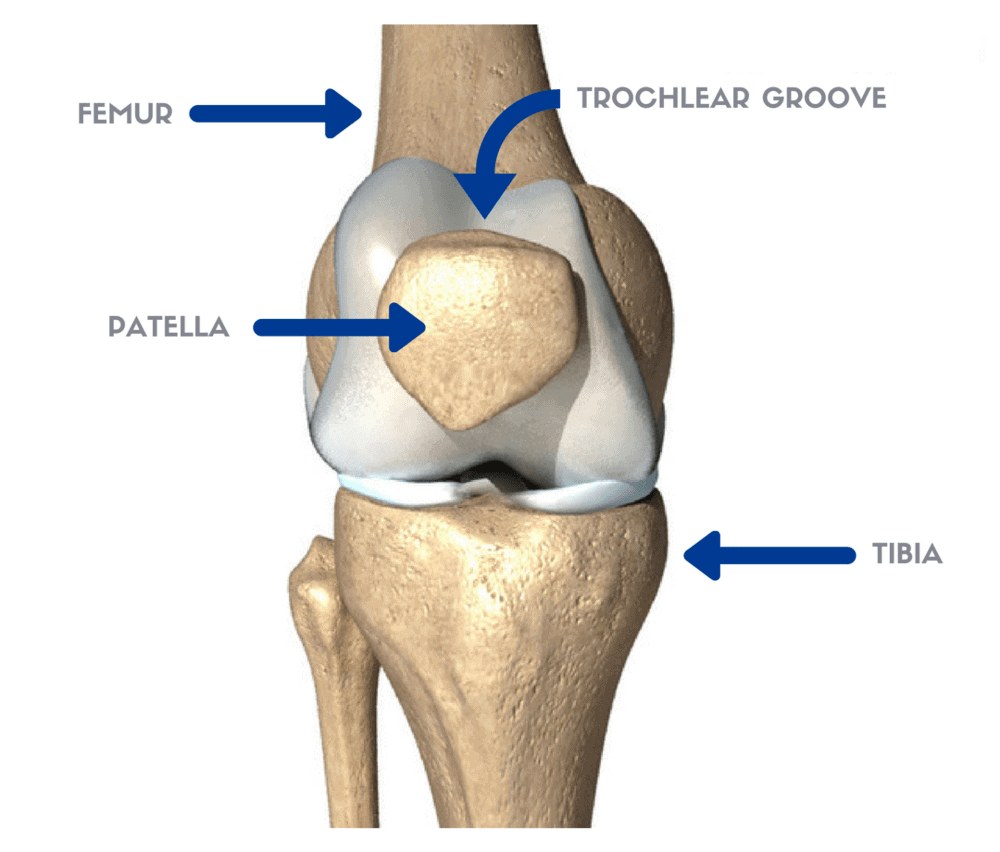Patellofemoral Pain Syndrome (PFPS)

If you are experiencing knee pain, there is a good chance that you may be suffering from patellofemoral pain syndrome (PFPS).
PFPS is the most common cause of anterior knee pain, accounting for up to 50% of all cases.
In this comprehensive guide, we will discuss everything you need to know about PFPS including what causes it, how to diagnose it and the best treatment options available. Stay tuned!

Causes of Patellofemoral Pain Syndrome (PFPS)
There are a number of different factors that can contribute to the development of patellofemoral pain syndrome (PFPS), a condition in which pain is felt around the kneecap (patella).
In some cases, a specific event or injury may be responsible for the onset of symptoms.
However, in many cases, there is no single event that can be identified as the cause.
Some of the most common causes of PFPS include:
Overuse:
Repeated stress on the knee, such as from running or jumping, is a common cause of PFPS.
This type of stress can lead to inflammation of the tissues around the kneecap, resulting in pain.
Anatomical factors:
Certain anatomical factors can make an individual more prone to developing PFPS.
For example, people with flat feet or knock knees are more likely to experience patellofemoral pain than those with normal alignment.
Muscle weakness:
Weakness in the muscles that support the knee, particularly the quadriceps, can lead to patellofemoral pain.
This is because the weak muscles are unable to properly stabilize the kneecap, which can then tracking improperly and rub against the femur (thighbone).
Arthritis:
Osteoarthritis and rheumatoid arthritis are both types of arthritis that can contribute to the development of PFPS.
Arthritis results in the breakdown of the cartilage that cushions the knee joint, which can lead to pain and inflammation.
In some cases, it may be difficult to identify a single cause of patellofemoral pain syndrome. However, understanding the possible causes can help in designing a treatment plan that is likely to be effective.
Symptoms of Patellofemoral Pain Syndrome (PFPS)
Patellofemoral pain syndrome (PFPS) is a condition that causes pain in the front of the knee.
The pain is caused by damage to the patellofemoral joint, which is the joint between the kneecap (patella) and the thighbone (femur).
PFPS is also known as “runner’s knee” or “jumper’s knee” because it is common in people who play sports that involve running or jumping.
PFPS can cause a dull ache or sharp pain in the front of the knee.
The pain may get worse when you walk up stairs, run, or sit for a long time with your knees bent.
You may also feel the pain when you straighten your leg after sitting with your knees bent for a while.

Diagnosis of Patellofemoral Pain Syndrome (PFPS)
To make a diagnosis of patellofemoral pain syndrome, your doctor will likely:
1. Review your medical history.
Be prepared to answer questions about when your knee pain began, how long you’ve had it and what makes it feel better or worse.
2. Discuss your symptoms.
Your doctor may ask you to describe the location and type of pain you’re experiencing, as well as any changes in the way you walk or run.
3. Perform a physical examination.
Your doctor will examine your knees for signs of swelling, tenderness or deformity.
He or she also may check for muscle weakness around the knee joint.
4. Order imaging tests.
X-rays or other imaging tests may be ordered to rule out other conditions that can cause knee pain, such as a fracture or arthritis.
5. Review your treatment options.
Your doctor will likely recommend nonsurgical treatments first, such as rest, ice and physical therapy.
If these don’t relieve your symptoms, surgery may be recommended.

Treatment for PFPS
Treatment for PFPS typically focuses on reducing the pain and inflammation associated with the condition.
This can be done through a variety of methods, including:
Rest:
Avoid activities that aggravate the pain, such as running or jumping.
Ice:
Apply ice to the affected area for 15-20 minutes at a time, several times a day.
Compression:
Wear a knee compression sleeve or wrap to help reduce swelling.
Elevation:
Keep the affected leg elevated when possible to reduce swelling.
Pain relief medication:
over-the-counter (OTC) pain relievers, such as ibuprofen or acetaminophen, can help relieve pain and inflammation associated with PFPS.
Stretching and strengthening exercises:
Specific exercises can help stretch and strengthen the muscles and tendons around the knee, which can help prevent further injury and reduce pain.
In some cases, more aggressive treatment may be necessary to achieve relief from PFPS. This can include:
Corticosteroid injections:
Corticosteroids are a type of anti-inflammatory medication that can be injected into the knee to help reduce pain and inflammation.
Physical therapy:
A physical therapist can teach you specific exercises and stretches to help reduce pain and improve range of motion.
Surgery:
In severe cases of PFPS, surgery may be necessary to repair or correct any underlying problems with the patellofemoral joint.
If you think you may have patellofemoral pain syndrome, it is important to see your doctor for a proper diagnosis.

Tips to prevent Patellofemoral Pain Syndrome (PFPS)
Following these tips may help prevent patellofemoral pain syndrome or relieve symptoms:
– Wear shoes that fit well and provide good support for your feet.
– Choose shoes with low heels and avoid high-heeled shoes.
– Avoid activities that put extra stress on your knees, such as running on hard surfaces or downhill.
– If you must run, consider cross-training with low-impact activities such as swimming or bicycling.
– Strengthen the muscles around your knee joint, including your quadriceps (thigh), hamstrings (back of thigh), and hip abductors (outer thigh).
– Improve your flexibility by stretching your quadriceps, hamstrings, and hip abductors.
– Use proper form when exercising to avoid placing unnecessary stress on your knees.
– Always warm up before participating in any type of physical activity.
– Cool down after exercise.
– Control your weight to avoid putting extra strain on your knees.
– If you have a desk job, take frequent breaks to move around and stretch your legs.
– Place a small pillow or rolled towel under your knees when you sleep on your back.
– Sleep on your side or stomach with a pillow between your legs.
If you experience persistent knee pain, see your doctor for a proper diagnosis and treatment plan.
Exercises to strengthen the knee
Following are some exercises that can help strengthen the knee:
1. Hamstring curls
This exercise works the muscles at the back of the thigh, which helps to stabilize the knee joint.
It can be done with a resistance band or by lying on your back and lifting your leg up with a weight.
2. Quadriceps strengthening
This exercise works the large muscles at the front of the thigh, which are responsible for extending the knee.
It can be done by standing on one leg and holding a weight in the other hand, or by doing squats with weights.
3. Leg press
This exercise works all the muscles in the legs, including the quadriceps, hamstrings, and calves.
It can be done by sitting in a machine and pushing weights away from you, or by lying on your back and pushing a weight up with your legs.
4. Step-ups
This exercise works the muscles in the legs and helps to improve balance.
It can be done by stepping up onto a step or platform with one leg, and then stepping down with the other.
5. Calf raises
This exercise works the muscles in the calves, which help to stabilize the ankle joint.
It can be done by standing on a raised surface and lifting your heels up, or by holding weights in your hands and doing calf raises.
Frequently Asked Questions
Patellofemoral pain syndrome (PFPS) is a condition that causes pain around the kneecap (patella).
The pain is often worse when walking up and down stairs, sitting for long periods of time with the knees bent, and during activities such as running or jumping.
Anterior knee pain scale (AKPS) is a validated questionnaire used to measure the severity of patellofemoral pain syndrome.
Medial patellofemoral ligament (MPFL) is a key stabilizer of the patella.
Patellofemoral joint osteoarthritis (PFJOA) is a degenerative condition of the knee joint that can lead to patellofemoral pain syndrome.
Exercise, therapy, and weight loss are often recommended as treatments for PFPS.
The most common symptom of PFPS is a dull, aching pain around the kneecap that gets worse with activity.
Other symptoms may include:
-Pain that worsens when sitting for long periods of time with the knees bent
-Pain that Increases when going up and down stairs or hills
-Pain that is worse after running or jumping activities
Your doctor will likely ask you about your symptoms and medical history. They will also examine your knee for signs of swelling or tenderness.
Imaging tests, such as an X-ray or MRI, may be ordered to rule out other conditions that could cause similar symptoms.
Treating patellofemoral pain syndrome often starts with conservative measures, such as rest, ice, and over-the-counter pain medications.
Physical therapy may also be recommended to help stretch and strengthen the knee or hip muscles.
In some cases, steroid injections or surgery may be necessary if other treatments do not provide relief to the patellofemoral pain syndrome patients.
There is no sure way to prevent PFPS, but you can help reduce your risk by maintaining a healthy weight, stretching and strengthening the muscles around the knee, and avoiding high-impact activities if you are prone to pain in the knees.
3 Ways to Level Up Your Rehab and Injury Prevention With Us




